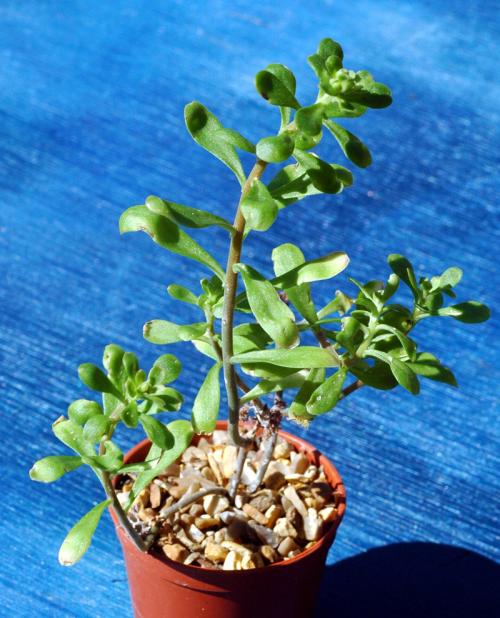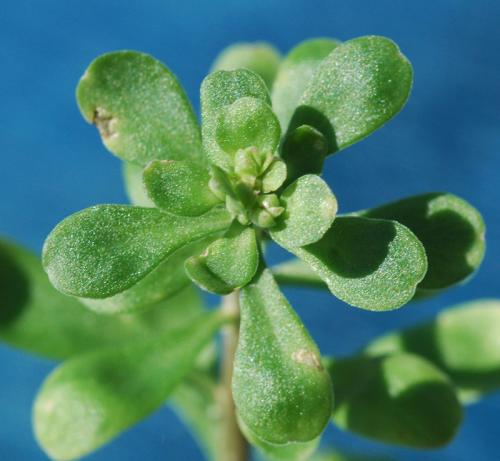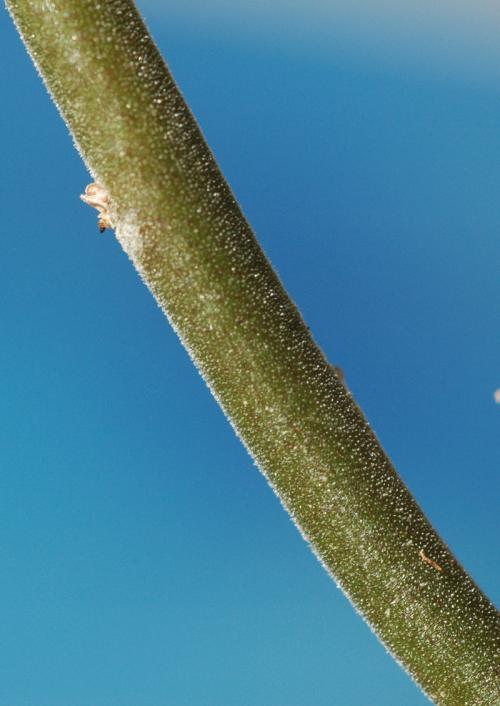QUEVAE Hamet, 1914
Synonyms:
Sedum arsenii Fröderström
Sedum falconis Brandegee (1919)
Type : Arsène 193, Puebla, Mexico.
Subgenus Sedum
Distribution: Mexico (Trans-Mexican Volcanic Belt :Guerrero, Mexico, Morelos, Puebla, Oaxaca, San Luis Potosí, Tlaxcala); 1900 – 2400 m
Description (by 't Hart & Bleij in IHSP, 2003):
Glabrous perennial subshrubs with tuberous roots and procubent, much-branched, finely papillose stems with flaking bark, 20 – 40 cm tall.
Leaves alternate, oblanceolate to elliptic-oblanceolate, spatulate-oblong or subobovate, obtuse, spurred, sometimes finely papillose, 5 – 38 x 3 – 7 mm.
Flowering branches erect, papillose, 7 – 40 cm.
Inflorescences few-flowered panicles or corymbs, bracts subobovate, papillose, pedicels to 3 mm.
Flowers 5-merous, subsessile, sepals basally free, broadly spurred, almost equal, oblong, obtuse, papillose, green, 2 – 7 x 0,8 – 2,4 mm erect, petals slightly connate, triangular-oblong to ovate, acute, shortly mucronate, papillose along the mid-rib, white, 5 – 7 mm, reflexed, anthers red.
Cytology: 2n = 40, 42.



Photos Ray Stephenson